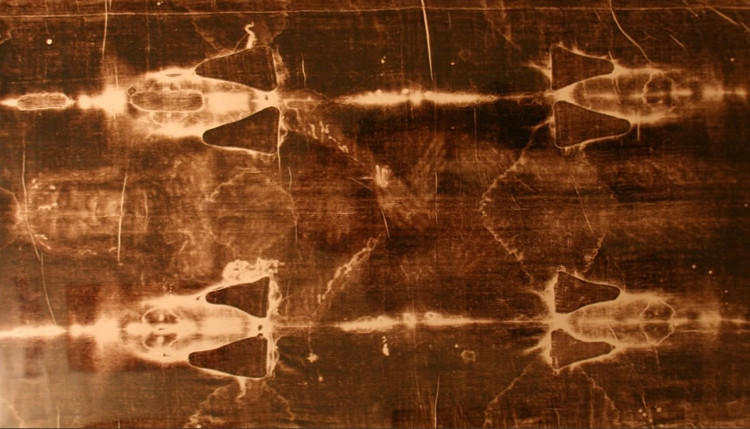Proof of the blood of Jesus on the shroud of Turin
Experts conclude that the shroud of Turin has a blood stain of tortured victims, reinforcing the hypothesis that the cloth used to shroud the body of Jesus.
An Italian team discovered linen cloth, thought to be used to wrap the body of Jesus after execution, containing nanoparticles that are rarely seen in healthy human blood, RT reported on July 17. These tiny particles reveal the pain of the victim wrapped in the shroud, according to Elvio Carlino, a researcher at the Institute of Crystal Studies in Bari, Italy.
Professor Giulio Fanti of the University of Padua said the particles have a strange structure, size and distribution. According to Professor Fanti, blood stains contain large amounts of creatinine and ferritin, often seen in patients suffering from severe external forces such as torture."The existence of biological nanoparticles found in the experiment indicates the violent death of a man wrapped in a shroud of Turin," Professor Fanti said.

Turin shroud.(Photo: YouTube).
The Turin shroud is about three meters long and one meter wide, preserving the faint image of a man whom Christians consider to be the image of Jesus. The fabric is the subject of many course studies to confirm its authenticity. Many opinions suggest that the image of Jesus on canvas was made by priests in the Middle Ages.
In the study published in PlosOne, Professor Fanti concludes that the characteristics of nanoparticles cannot be faked over centuries on fabric.
The team draws evidence from studies of atomic and medical analysis on patients suffering from accidental injury and torture."The findings are found through methods in the field of electron microscopy," Elvios said. This is also the first study on the nano-level properties of the original fabric taken from the Turin shroud.
The experiments were conducted by the Institute of Materials in Trieste and the Institute of Crystal Studies in Bari, under the supervision of the Italian National Research Council and the Department of Industrial Engineering at the University of Padua. The cloth is on display at St. John's Cathedral in Turin.
The image is said to be Jesus on the shroud of Turin.(Video: CNN).
- Clean wash for Turin shroud
- New hypothesis about Turin shroud
- The mystery of the Turin shroud was decoded
- Images of Jesus childhood
- Controversy around the
- The Turin shroud will be on display in 2015
- Display the shroud of Turin at the Italian church
- Mysterious relics related to Jesus
- There have been more than 500,000 people booking tickets
- The search for the living descendant of Jesus
- Is the Shroud of Turin using the body of Christ the body?
- 8 ancient medieval secrets without explanation
 Discovered an ancient centipede fossil 99 million years old
Discovered an ancient centipede fossil 99 million years old Discovered bat-like dinosaurs in China
Discovered bat-like dinosaurs in China Discovered a 200-year-old bronze cannon of the coast
Discovered a 200-year-old bronze cannon of the coast Discover 305 million-year-old spider fossils
Discover 305 million-year-old spider fossils